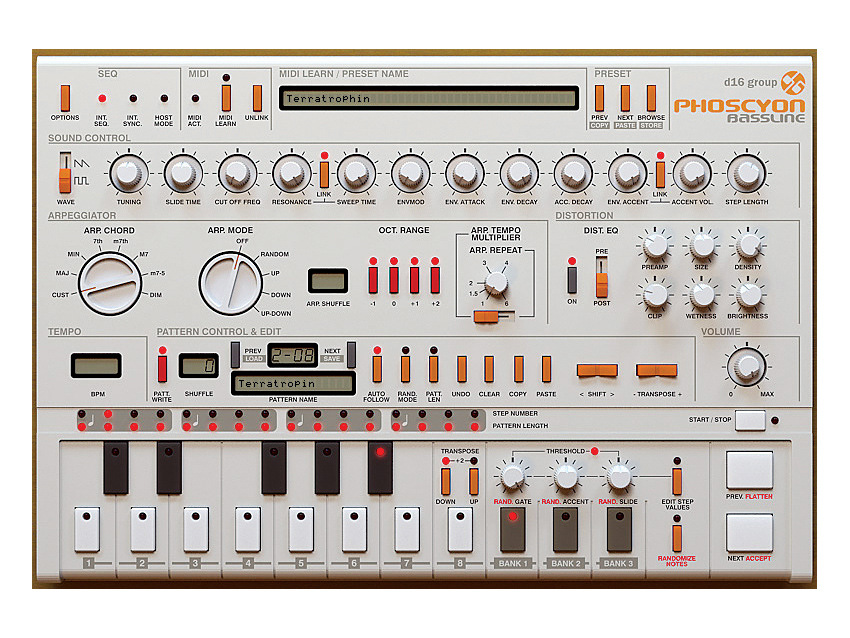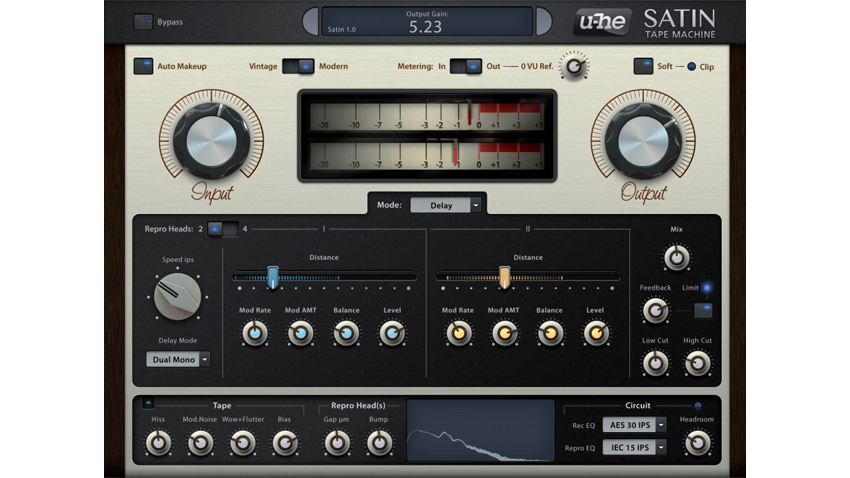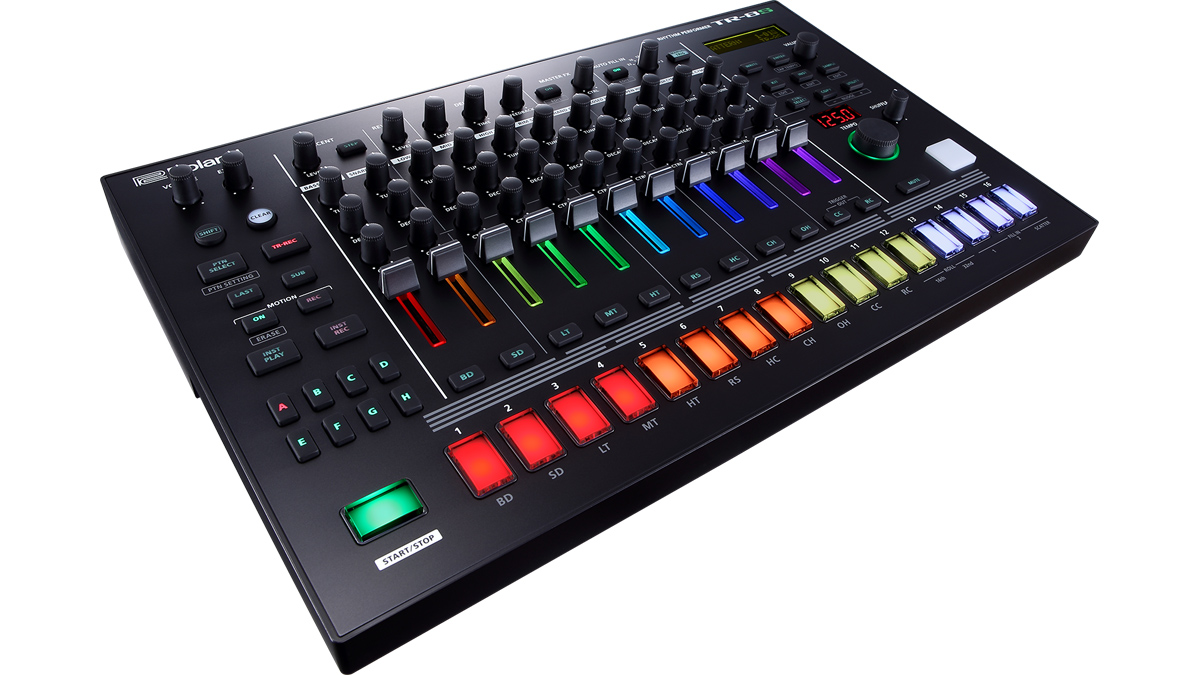Everything you need to know about: acid house
Defined by the sound of a legendary synth, this Chicago-born subgenre remains deeply popular

The origin story is a long-established comic book trope. You know the type of thing: Peter Parker being bitten by a radioactive spider and becoming Spiderman; a young Bruce Wayne witnessing his parents’ murder and deciding to become some kind of vigilante in a cape...
It’s rare that a musical genre has an origin story as compelling as any dreamed up by Stan Lee, but acid house might just stake the best claim. Usually genres evolve over time, making it hard to discern how or when they started. Acid house is different: we can pinpoint the exact moment when three men from Chicago acquired super powers thanks to a little silver box.
The year was 1985 and Chicago trio Phuture (DJ Pierre, Spanky and Herb J) were messing around with a newly acquired Roland TB-303 bass synth. Hooked up to Roland’s TR-707 and TR-727 drum machines, they put together 12 minutes of frenetic, hypnotic madness, which they named Acid Tracks. As DJ Pierre explains: “We gave it to Ron Hardy [legendary DJ at Chicago’s Music Box club], who started playing it straightaway. In fact, the first time he played it, he played it four times in one night! The first time people were like, ‘What the fuck is this?’ but by the fourth time they loved it.”
Acid Tracks wasn’t the first acid track to make it onto vinyl. I’ve Lost Control by Sleezy D (the duo of Adonis and Marshall Jefferson) had that distinction, released in 1986, before Acid Tracks finally got pressed the following year. Either way, acid house was born and became a subgenre in its own right, defined by the squelching, repetitive sound of that abused 303.
The TB-303 is integral to the acid house story. Released in 1981 and originally intended as a bass guitar accompaniment for organists and guitarists, its only problem was that it sounded almost nothing like a real bass guitar. Around 10,000 units were sold, which a lot of manufacturers would be happy with, but represented commercial failure for Roland. The unloved unit was removed from sale by 1984, soon dropping in price and becoming accessible to producers who couldn’t care less about its authentic bass sound (or lack of).
The characteristics of the 303 that pushed producers into abusing it were obvious. It was fiddly to program, and so much easier just to create a loop and let it play rather than sequencing long, complex patterns. It also did weird, wonderful things when the resonance on the filter was cranked up, squelching and squealing in a unique way, especially when run through distortion.
The 303 did weird, wonderful things when the resonance on the filter was cranked up, squelching and squealing in a unique way, especially when run through distortion.
Aside from the 303, acid house remains largely open to personal interpretation. Drum sounds from Roland machines like the 808 and 909 were always popular in addition to the 707 and 727, but just about anything goes. It doesn’t technically have to be a 303 either; anything squelchy and trippy will do, as long as it’s in the right spirit.
Want all the hottest music and gear news, reviews, deals, features and more, direct to your inbox? Sign up here.
Acid started in Chicago, with many of the early releases coming via the Windy City’s legendary house label Trax Records, but the sound quickly spread around the world, spawning classics like Aphex Twin’s 1991 Didgeridoo from the UK or Hardfloor’s 1992 Acperience from Germany. Cynics might say that acid house hasn’t evolved much over the years, but there are plenty who’ve kept the faith, not least London’s I Love Acid crew, who have been running regular events in the UK capital since 2007 and remain some of the most dedicated believers in the unique sound of the 303.
The acid sound remains a mainstay of house and techno, cropping up on tracks and in DJ sets all over the place. Rough, raw and exhilarating – acid house sounds as otherworldly today as in 1985.
The acid house sound: four essential studio tools

1. D16 Phoscyon
The Roland TB-303 is no longer the budget option it was when Phuture kicked off the acid house sound. Mint condition original units can sell for up to £3,000.
Thankfully there are dozens of cheaper alternatives these days, from analogue clones like the Cyclone Analogic TT-303 Bass Bot through to Roland’s own virtual analogue TB-03 and various software options.
One of our favourites is D16’s excellent Phoscyon plugin. At €59 it’s a bargain for a very realistic emulation of the classic hardware.
The basic sound of the 303 is remarkably close to the real deal, but Phoscyon goes even further, adding a built-in arpeggiator and a more intuitive sequencer, distortion and additional synthesis controls.

2. u-he Satin
A big part of the classic ’80s house sound comes from the fact that the recording process was usually based around analogue mixers and tape machines, adding a layer of subtle warmth and colouration to the sound.
You could follow the same approach and record your own tracks to tape, but an easier method for most of us is to use tape emulation effects to achieve a similar sound. There are lots of options, but U-he’s excellent Satin plugin (€129) is a solid choice, offering everything from very gentle colouration through to slammed, compressed saturation.’

3. Roland TR-8S
Roland’s virtual analogue recreation of its classic TR-808 drum machine isn’t a slavish homage to the original, not least because it combines features and sounds of the 808 and 909 in one box.
It’s a very hands-on piece of kit, ideal for banging out drum patterns quickly and jamming live. At just over £300, it’s much cheaper than an original 808 or 909, both of which sell for around £3,000.
If you can stretch to a slightly higher budget, the TR-8S (just under £550) offers the ability to load your own samples alongside the factory drum hits.

4. Goldbaby TDMC
There are countless vintage drum machine sample packs on the market but Goldbaby’s Tape Drum Machine Collection is a favourite.
For $49, you get 7,000 drum samples, including acid house staples from the 707, 727 and more - all processed with tape machines and hardware tape emulators for a punchier, warmer sound. Ideal for vintage house styles.


Future Music is the number one magazine for today's producers. Packed with technique and technology we'll help you make great new music. All-access artist interviews, in-depth gear reviews, essential production tutorials and much more. Every marvellous monthly edition features reliable reviews of the latest and greatest hardware and software technology and techniques, unparalleled advice, in-depth interviews, sensational free samples and so much more to improve the experience and outcome of your music-making.
